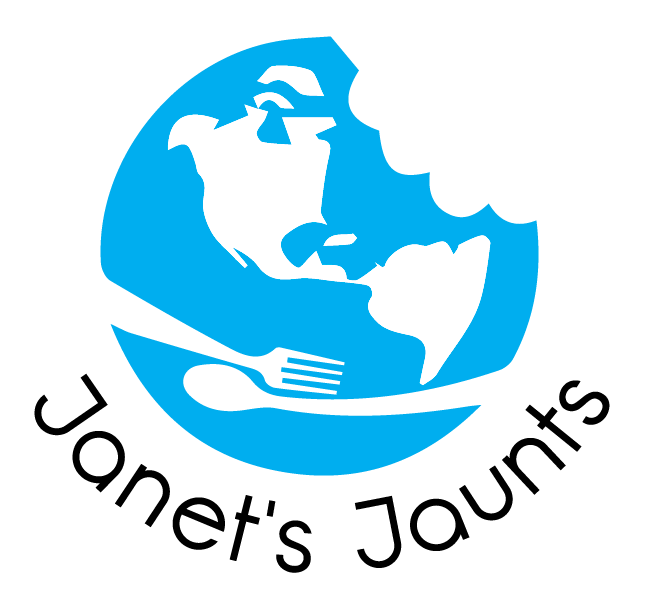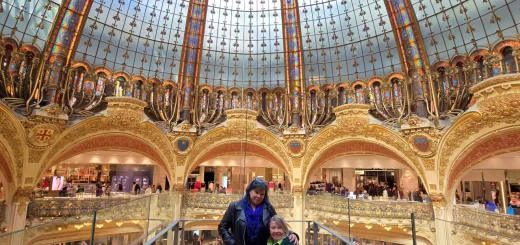Vacation on French canal proves to be pure bliss

The Princess approaches a rental boat on the canal as pedestrians and bicyclists follow the towpath.
Janet Podolak
Early morning was my favorite time, when the fog lingered on the still surface of the canal, and the crowing of a rooster from a nearby farm welcomed the day. Before anyone else was up, I would sit on the deck with a croissant still warm from the village bakery, sip my tea and watch the water’s shifting reflections.
My week on a canal in France’s Alsace-Lorraine was one of the very best travel experiences I’ve ever had. Yet few have ever have heard of my host, French Country Waterways, LTD.
The company rarely advertises, and it doesn’t need to, although I spotted a small ad in a recent New Yorker. Like me, many who have taken one of its luxury canal voyages want to come back for another. Two of the three couples aboard the Princess with me had been on others among the French Country Waterways, LTD cruises.
Some of its most popular itineraries for this summer likely already have been booked, but I’m writing this now so you still have a chance.
We cruised at a snail’s pace, covering 67 miles in a week, and passing through 36 locks — easy to follow the boat on foot along the towpath between locks or by pedaling of one of the bikes from the Princess.
Using five former shallow-draft barges rebuilt as hotel boats, FCWL operates week-long voyages on various canals criss-crossing France. Friends know I love France and have visited many of its regions before, smitten with its landscapes, quaint villages and many contrasts. This slower-paced way of seeing the countryside was just perfect.
I cruised with six others on the Princess in Alsace-Lorraine, but French Country Waterways has spring and summer voyages in the regions of Champagne, Upper Loire and Burgundy, as well. The boats are all 128 feet long, and one holds up to 18 passengers plus crew. Cruises take place from April to October.
The French canals had their beginnings in the 17th century, evolving into an efficient system to transport wine, timber, grain and other products throughout France and between the Atlantic and the Mediterranean. There are few working barges on the canals anymore, but the country’s efficient French Navigation Authority continues to maintain the canals for their historic importance and scenic beauty.
My first experience with a French canal was several years ago when I joined a tour boat at Carcassonne for a two-hour ride including locks on the Canal du Midi. Ever since then, I’ve wanted to go back, and last year I tried to organize a self-drive boat on the canals with friends. It never materialized, but I haven’t given up.
After a week’s visit to Toulouse in the southwest of France, I returned by air to Paris and joined a high-speed TGV train to Strasbourg, in the northeast part of the country. That was where I would be met by ship’s staff at the Hotel Regent Petite France, in the heart of the oldest part of that French city. The hotel was crafted from a 15th-century half-timbered building, very Germanic-looking and typical of Alsace.
I’ve been on a lot of boats, from sailing ships to ferries and ocean cruise lines, so I had certain expectations for my cabin and its bathroom. I hoped it wouldn’t have a marine toilet.
I was delighted to find a comfortable and well-appointed bedroom almost as large as mine at home, a marble-floored bathroom with a state-of-the-art shower and even a heated towel rack. Fresh flowers were on one of the dressers, and individual controls allowed each occupant to adjust the air conditioning.
Captain Mark introduced his staff as we sipped champagne, later adjourning for the first of the candlelit dinners we would enjoy in the dining room. Lunch and dinner both were accompanied by wonderful red and white wines, and the bar in the salon had other drinks available 24/7.
Dining aboard was a true highlight for all of us. Wines poured (a red and white at each meal), including many from Premier Cru and Grand Cru vineyards, were the finest I’ve found aboard any ship.
Breakfast began with fruits and juices accompanied by an array of fresh pastries still warm from the bakery in town. Lunch meant a buffet-style selection of freshly made salads, accompanied by a quiche of the day. On nice days it was served so we could dine outdoors on the deck. Our five-course dinners were always illuminated by candlelight with fresh flowers on the dining room table. Three cheeses, usually served by our hostess Chloe, were offered and explained for both lunch and dinner. Sunday’s dinner cheeses were Comté, Chevre frai des vosges and Fleur du Maquis. Just as with the wines FCW serves, some are local to the mooring.

As the Princess canal boat passes through a lock in a small French town, a couple on deck toasts their French Country Waterways voyage.
Janet Podolak
After starting in Nancy, we would cruise on the Canal de la Marne au Rhin back toward Strasbourg, passing through 36 locks in 68 miles — including one, called the Saint-Louis-Arzviller Inclined Plane, that would take our boat over the Vosges Mountains. An engineering marvel, it replaced a ladder of 17 locks in a little more than a mile and a half, allowing boats to make the passage over the mountain in just 20 minutes instead of the six or more hours it took to resolve the former bottleneck of boats.
Louise is French but learned her excellent English while working as a nanny in both Atlanta and Chicago. The entire ship’s staff, from Capt. Mark to first mate Sam and hostesses Anna and Chloe, were English-speaking. Our chef, Florian Bonfils, fresh from his own restaurant in Dijon, let his delicious breakfast, lunch and dinner creations speak for him.
Throughout the voyage, he and Louise would augment provisions from farmers and village markets along the way. We would see Louise take off on a bike, to rejoin the boat several locks away laden with fresh produce. One day Florian hopped off to pick fat, just-ripened blackberries from canalside bushes that appeared in that evening’s dessert.
In Nancy, we saw the gold gilded magnificence of Place Stanislas and learned why that Polish king had such a great impact on this French city. Our 10 a.m. cathedral visit was thwarted by the Feast of the Assumption, so we stopped at the ornate and very French Brasserie Excelsior for a balcon de blanc, the small glass of white wine considered by Frenchmen to be the first drink of the day. Reflected in the cafe’s original Baccarat mirror from the 1800s were many others doing the same thing. A changing train schedule above the door indicated to me they were probably awaiting a train.
Each evening on board, Louise would tell us about the tours for the day ahead. Because the locks closed at night, we usually were moored in a small town or in the countryside, where we were free to go ashore and explore.
Most of our tours were in the morning, with a return to the ship for lunch and cruising to the next port. Sometimes we boarded the Mercedes van for a short ride to our destination.
One day we visited the Baccarat Chateau, in the town of the same name, where the famous crystal is made and displayed.
A highlight for me was a visit to Sarrebourg and the 13th-century Chapel of the Cordeliers, illuminated by a stunning stained-glass window by Marc Chagall. As the week drew to a close, we visited a wine village in Alsace to meet the vintner and taste the sunny terroir in his Rieslings, Muscat and Sylvaner wines,
Every French Country Waterways cruise includes a fine dinner ashore at a Michelin-starred restaurant. Ours was at Le Cerf in Marlenheim, and we all dressed up for the occasion and had our photos taken for the ship’s scrapbook. At Le Cerf, I ordered lobster lasagne as my main course, and wines were paired with each of the five courses. The meal was delicious but not better than what we’d been eating on board.
After sliding into the valley in a bathtub-like contraption on the Inclined Plane, we would continue going downhill in the locks to the end of our cruise at Saverne. We’d enter the lock in high water, which would be let out so we could cruise out into the next level when the lock was reopened. In most cases, there was less than 5 inches clearance for the boat and the stone sides of the locks, making me glad my earlier plans to drive my own boat through the canals of France had fallen through.



Recent Comments